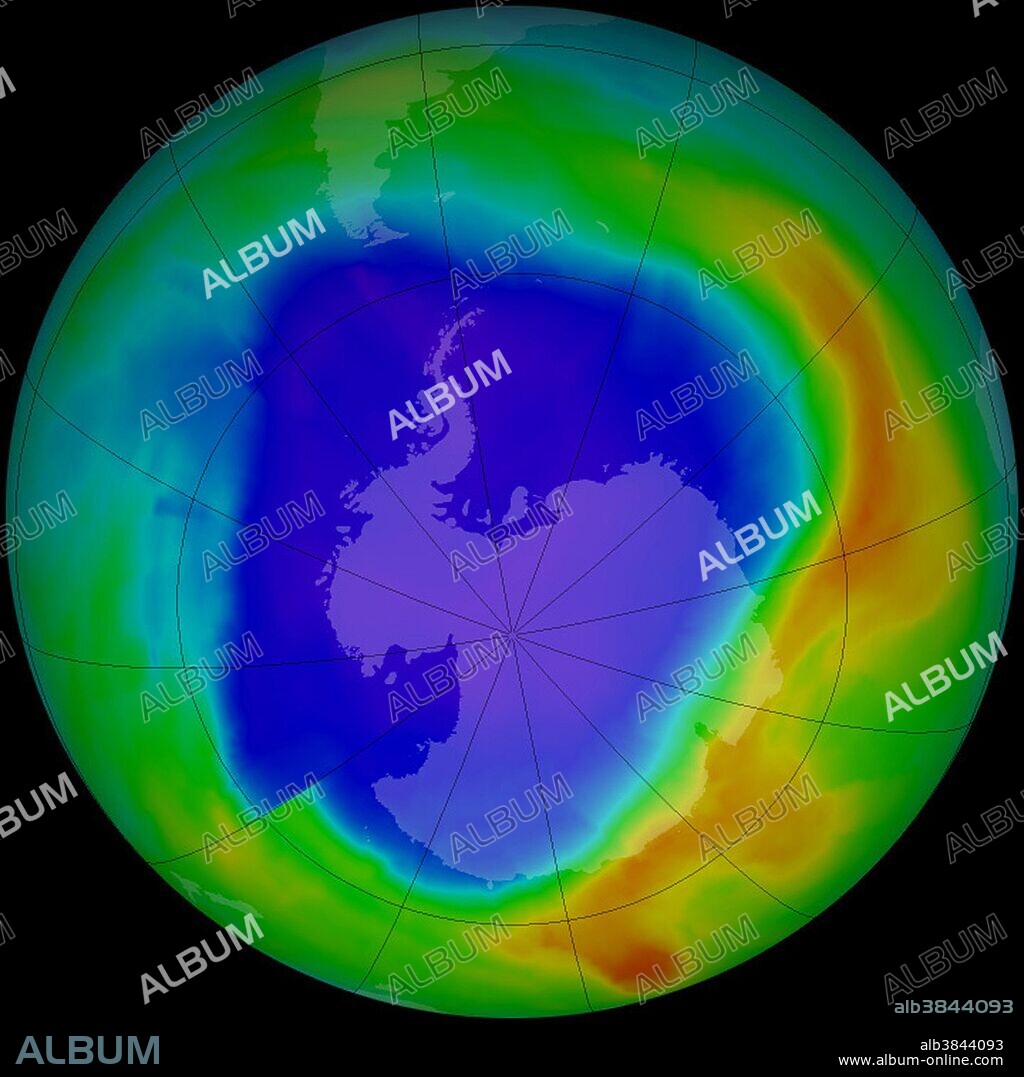alb3844093
Antarctic Ozone Hole, 2013

|
Ajouter à une autre Lightbox |
|
Ajouter à une autre Lightbox |



Avez-vous déjà un compte? S'identifier
Vous n'avez pas de compte ? S'inscrire
Acheter cette image.
Sélectionnez l'usage:

Titre:
Antarctic Ozone Hole, 2013
Légende:
Voir la traduction automatique
The ozone hole over Antarctica was slightly smaller in 2013 than the average for recent decades, according to data from the Ozone Monitoring Instrument (OMI) on NASA's Aura satellite and the Ozone Monitoring and Profiler Suite (OMPS) on the NASA-NOAA Suomi NPP satellite. The average size of the hole in September/October 2013 was 21.0 million square kilometers (8.1 million square miles). The average size since the mid 1990s is 22.5 million square kilometers (8.7 million square miles). This image shows ozone concentrations over the South Pole on September 16, 2013, as measured by OMI. The ozone hole is a seasonal phenomenon that starts during the Antarctic spring (August and September) as the sun begins rising after winter darkness. Pole-circling winds keep cold air trapped above the continent, and sunlight catalyzes reactions between ice clouds and chlorine compounds that begin eating away at natural ozone in the stratosphere. In most years, the conditions for ozone depletion ease by early December, when the seasonal hole closes.
Crédit:
Album / Science Source / NASA Ozone Watch
Autorisations:
Modèle: Non - Propriété: Non
Questions sur les droits?
Questions sur les droits?
Taille de l'image:
2835 x 2835 px | 23.0 MB
Taille d'impression:
24.0 x 24.0 cm | 9.4 x 9.4 in (300 dpi)
Mots clés:
 Pinterest
Pinterest Twitter
Twitter Facebook
Facebook Copier le lien
Copier le lien Email
Email
